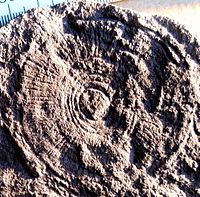
There was a time in the history of life on earth before predation.
Scientists talk about an Ediacaran period in the history of our planet. It is named for the Ediacara hills in Australia, where some of the key fossils were found.
Also, for the phonetically curious, the proper pronunciation is Ee-dee-ac-aran. Rhymes with Me - he- wrack -Iran.
Anyway, the creatures of the Ediacaran did not eat each other. They were without eyes, claws, or antennae: no means for watching, seizing, or evading each other. Beginning around 635 million years ago, continuing until 542 million, Ediacaran biota had simple lives as they crawled along the sea floor, eating such organic matter ("the mat" as Peter Godfrey-Smith calls it) that had built up there. Eventually dying and contributing to that mat.
Ediacaran biota did have nervous systems. The fact itself indicates that nervous systems aren't entirely about sensing and reacting to the outside. The biota didn't have to react to the outside except by continuing to move. If they bumped into each other: so what?
What else might nerves do then? Another role they possess is coordinating the movement of the body itself. A nervous system can consist essentially of the Coxswain shouting to the oarsmen "stroke, stroke, stroke." A more highly developed nervous system means more efficient crawling forward, more exposure to the yummy stuff on the mat.
All this sounds peaceful, even Edenic. It was the great explosion of new life forms at the start of the Cambrian that destroyed this eden. That was when creatures started eating and in converse watching out for each other. The Coxswain had to learn to notice when another of the "boats" was about to eat him, and direct evasive operations -- a more complicated task than rhythmically telling teammates to "stroke!"
Comments
Post a Comment